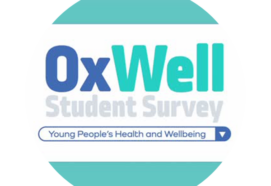TRIGGER WARNING: Please be aware that this podcast explores themes around the topics of self-harm and suicide.
In this Papers Podcast, Dr. Miles Reyes and Dr. Apurva Bhatt discuss their co-authored CAMH journal Special Issue paper ‘Breaking the Silence: An Epidemiological Report on Asian American and Pacific Islander Youth Mental Health and Suicide (1999–2021)’ (https://doi.org/10.1111/camh.12708).
There is an overview of the paper, methodology, key findings, and implications for practice.
This paper was included in the 2024 CAMH journal Special Issue on ‘Equity, Diversity, and Inclusion in Child and Adolescent Mental Health’, published in May 2024.
Discussion points include:
TRIGGER WARNING: Please be aware that this podcast explores themes around the topics of self-harm and suicide.
- The reason behind using the term ‘Breaking the Silence’ in the title of the paper.
- The rates of death by suicide in Asian American and Pacific Islander youth and gender differences in the rates.
- The gender differences in the rates of self-reporting depression symptoms, suicidal ideation, and suicide attempts in Asian American and Pacific Islander youth.
- Why this group have been excluded from previous studies and literature.
- Significant sub-groups differences within the findings and the differences compared to other demographic groups.
- (TRIGGER WARNING) The findings relating to the methods of suicide and how this differs across demographic groups.
In this series, we speak to authors of papers published in one of ACAMH’s three journals. These are The Journal of Child Psychology and Psychiatry (JCPP); The Child and Adolescent Mental Health (CAMH) journal; and JCPP Advances.
#ListenLearnLike
Subscribe to ACAMH mental health podcasts on your preferred streaming platform. Just search for ACAMH on; SoundCloud, Spotify, CastBox, Deezer, Google Podcasts, Podcastaddict, JioSaavn, Listen notes, Radio Public, and Radio.com (not available in the EU). Plus we are on Apple Podcasts visit the link or click on the icon, or scan the QR code.

Dr. Miles Reyes, M.D. is a resident physician and first generation, Filipina-Amerian immigrant. She received her Bachelor of Science in Psychobiology from the University of California, Los Angeles. She received her Doctorate of Medicine from the University of California, Riverside School of Medicine with a designated emphasis in healthcare leadership in 2024. She is a psychiatry resident physician at the Charles R. Drew psychiatry residency training program in Los Angeles County, with plans to pursue a child and adolescent psychiatry fellowship. Her professional interests include cultural and social determinants influencing psychiatric diagnoses and outcomes, media and social media impact on youth mental health and self-identity, and medical education and training reform.

Dr. Apurva Bhatt
Apurva Bhatt, M.D., is a child, adolescent and adult psychiatrist and Clinical Assistant Professor at Stanford University School of Medicine. Her role spans the General Adult Psychiatry Division, Child Psychiatry Division, and Center for Youth Mental Health and Wellbeing Division.
Dr. Bhatt specializes in early psychosis evaluation and treatment. She currently provides clinical care in both the Lucille Packard Children’s Hospital Child INSPIRE early psychosis clinic and the Stanford Health Care INSPIRE clinic. She contributes to early psychosis program development in California (through EPI-CAL) and nationally (through PEPPNET/Westat). She is also co-chair of the American Academy of Child and Adolescent Psychiatry Adolescent Psychiatry Committee and Early Psychosis work group.
Dr. Bhatt provides school clinical consultations for the Redwood City School District through the Stanford Redwood City Sequoia School Mental Health Collaborative. She also provides clinical consultations to schools in the Los Altos School district, and supervises child and adolescent psychiatry fellows providing consultation to Los Altos, Redwood City, and Mountain View schools.
Dr. Bhatt’s research interests include early psychosis measurement instruments in pediatric populations, Asian American and South Asian youth mental health, and prevention of youth suicide by firearm. She enjoys teaching and mentoring students and trainees, and currently is a mentor through the American Academy of Child and Adolescent Psychiatry and the American Psychiatric Association’s FLIPP program.
Transcript
[00:00:01.560] Mark Tebbs: Hello, and welcome to the Papers Podcast series for the Association for Child and Adolescent Mental Health, or ACAMH for short. I’m Mark Tebbs. I have a background in psychology, mental health commissioning, coaching and freelance consulting. In this series, we speak to the authors of papers published in one of ACAMH’s three journals. They are the Journal of Child Psychology and Psychiatry, commonly known as JCPP, the Journal of Child and Adolescent Mental Health, known as CAMH, and JCPP Advances. If you’re one of the fans of our Podcast series, please subscribe on your preferred streaming platform, let us know how we did, with a rating or review, and do share with friends and colleagues.
Today, I’m delighted to be talking to Dr. Miles Reyes and Dr. Apurva Bhatt, who are the Lead Authors of a paper entitled, “Breaking the Silence: An Epidemiological Study on Asian American and Pacific Islander Youth Mental Health and Suicide (1999–2021),” which was recently published in the CAMH Journal. This paper forms part of the 2024 CAMH Journal Special Issue on “Equity, Diversity and Inclusion in Child and Adolescent Mental Health.”
Before we start, I just want to make sure that listeners are aware that this episode will be covering the topics of suicide and self-harm, so some listeners may find the discussion distressing, so we do encourage you to practise self-care. Miles, Apurva, thank you for joining me.
[00:01:29.969] Dr. Miles Reyes: Thanks so much for having us.
[00:01:32.011] Mark Tebbs: Really lovely to be speaking to you both. Let’s start with some introductions, Miles, maybe you could go first. If you could tell us about yourself, a little bit about your career to date and your research interests.
[00:01:42.545] Dr. Miles Reyes: Sure. Hi, everyone, my name is Miles Reyes. I’m a first-generation Filipina-American, and I’m also a Physician-in-Training here in the US. I have my Bachelor’s in Science Psychobiology from UCLA. I’m also a few days away from graduating with my Doctorate of Medicine from the University of California, Riverside. I’m also an incoming Resident Physician at the Charles R. Drew, LA County General Psychiatry Residency Training Programme, and with high hopes to go into Child Adolescent Psychiatry Fellowship in the future. Some of my research interests are cultural and social determinants influencing psychiatric diagnoses and outcome, as well as media and social media’s impact on youth mental health and self-identity formation. I’ll transition it now to my mentor, Dr. Apurva Bhatt.
[00:02:27.514] Dr. Apurva Bhatt: Hi, everyone, my name is Dr. Apurva Bhatt, and I’m a Child and Adolescent and Adult Psychiatrist, and Clinical Assistant Professor at Stanford University School of Medicine. I’m really excited to be here and share our work. Just a little bit about me. I specialise in early psychosis evaluation and treatment, and I work in both the Child Early Psychosis Clinic and Adult Early Psychosis Clinic here at Stanford, known as the INSPIRE Clinics. I also do school clinical consultations for several of our local school districts, where I provide clinical consultations in helping students.
Some of my research interests include early psychosis measurement instruments, specifically looking at paediatric populations. I’m also interested in looking at Asian American/South Asian youth mental health, specifically suicide rate and suicide prevention. I’ve also published and really worked hard on an advocacy level on prevention of youth suicide by firearm and looking at statewide firearm policies, and I’m also a mentor. Miles is one of my amazing ACAT mentees. I really enjoy mentoring students and trainees, and I’m really excited to be here.
[00:03:29.211] Mark Tebbs: Right, thank you for the introductions. So, let’s turn to the paper. It would be really helpful if you could just give us a brief overview.
[00:03:36.402] Dr. Miles Reyes: Yeah, so our paper touches on a very overlooked Asian American and Pacific Islander population. It’s a cross-sectional study, focusing specifically on the Asian American and Pacific Islander youth population in the United States. We looked at publicly accessible data through the CDC WONDER and YRBSS, here in the United States, and we looked at the years 1999 through 2021. We trended and analysed the data and found an increase in the suicide rate of this population, as well as a few other findings specific to this group and subgroups within the population.
Just in case anyone listening isn’t aware what CDC stands for, is the “Centers of Disease Control and Prevention.” It is a US Government organisation, and is the nation’s leading science-based, data driven service organisation that protects public health. And YRBSS stands for “Youth Risk Behavior Surveillance System,” here in the United States. You can find the CDC website at CDC dot G-O-V, which is .gov.
[00:04:38.906] Mark Tebbs: Brilliant, that’s a great overview. So, let’s get into a little bit more detail. So, I’m interested, the title of the paper, or the beginning part of the – is “Breaking the Silence.” Could you tell us why you choose that title and whether it gives us a little bit of an insight in why you wanted to study this particular area?
[00:04:56.183] Dr. Miles Reyes: Yes, so, it was just so important for us to end the lack of published literature on this subject and break the silences, if you will, as a Asian American women physician team. We wanted to focus specifically on this population, the Asian American and Pacific Islander population because there’s just so much literature surrounding suicide and youth suicide, but much of it doesn’t include, or purposely excludes, this population. And that’s particularly concerning, given that suicide was the leading cause of death for the Asian American/Pacific Islander youth population in 2021.
[00:05:30.000] Mark Tebbs: Yeah, it was quite shocking that that population was actively excluded from any studies. So, can you tell us how you went about the study? Were there any particular challenges or research limitations that you would be able to share with us?
[00:05:42.795] Dr. Miles Reyes: So, as I mentioned, it’s a cross-sectional study and it utilises publicly accessible data. So, anyone can access this data in the United States. It’s through the CDC WONDER database and the Youth Behavioral Risk Assessment Surveillance System, which is a self-reported survey type of data that’s distributed to high school students here in the US. The data’s already deidentified and we were able to just download it and analyse it thereafter.
The obstacles that we are working with were all really specific to the data we were given. So, for example, the YRBSS data is only reported every other year, and it’s through survey data. So, you’re subject to a lot of, you know, self-bias-y, self-reported data there, as well, and you’re also only given information every other year. So, for example, there was a large global pandemic that happened in 2020, but we weren’t able to get the data from 2020. However, we were able to get the data from 2021.
And another obstacle that we faced was that Asia, or Asian youth, is such a big, overarching umbrella term, however, we’re not able to analyse the single races that are found under Asia until 2018. So, the CDC only started reporting single-race data in 2018 and thereafter. So, we only had three years of those counts to report and again, whether you’re Indian, Japanese, Vietnamese, Filipino or Hawaiian, you’re lumped together as “Asian” up until 2018. So, those are some things to take into consideration.
[00:07:13.858] Mark Tebbs: Thank you for that. The data showed really alarming increases in Asian American and Pacific Islander youth suicide rates over the period of study. Could you just describe those key findings from the study?
[00:07:26.241] Dr. Miles Reyes: Yes, so, we had a few key findings from the study. We were able to look at rates, as well as gender differences and methods of suicide, as well as self-reported feelings of distress, suicidal ideation, and things like that. So, for example, one of our main findings was the rates of death by suicide in Asian American and Pacific Islander youth have doubled in the last decade, with rates reported from 2017 to 2021 as the highest reported rate since data collection began in 1999. The rates of suicide is higher in Asian American and Pacific Islander male youth versus female youth, but both saw their highest rate and peak rate in 2021, both post-pandemic.
The YRBSS data showed that a higher percent of Asian American and Pacific Islander females self-report symptoms of depression, such as feeling sad or hopeless, as well as suicidal ideation and suicide attempts. Yet, we just discussed earlier that the rates of suicide is higher in males, as opposed to females. Those are some interesting findings that we had.
[00:08:35.268] Mark Tebbs: With those rates of suicide, I’m just wondering why this group have been excluded from previous studies. Is there anything in the previous literature that gave a rationale for why that exclusion happened?
[00:08:48.853] Dr. Miles Reyes: So, some of the previous literature that we looked at actually showed that they were only going to be looking at various other racial minority groups here in the United States, so, for example, Black versus white suicide rates within the youth population, or Latinx versus white, or American Indian. But specifically, there weren’t that many studies looking at Asian youth, just because they said that the counts were suppressed or too low.
[00:09:15.490] Dr. Apurva Bhatt: The other thing to add to that is, when we look at these prior reports, I wonder – you know, I don’t think we’ll ever really know why the CDC or other big epidemiological reporting groups specifically exclude Asian American youth. But one thing to think about is there is ample literature showing that the model minority myth really perpetuates a lot of exclusionary behaviour, especially in research, where there is this, sort of, inappropriate assumption that Asian Americans don’t have mental health issues.
That they don’t struggle with suicide. That maybe the population is so small that we shouldn’t even worry about them. And that’s really problematic, as our report shows that this is actually a huge issue in this community and something that should be looked at. And what the model minority myth, what that alludes to is that this population is high achieving, their wellbeing is fine, there is no problem here, and let’s focus on other groups, rather than actually including this group.
And the other thing to think about is because, historically, this was a minority population in terms of sheer population numbers, however, in the last few years, Asian American youth are the fastest growing minority population in the USA. And so, that’s another thing to think about as future Researchers embark on looking at seeing how we can improve research studies on this population and tailor interventions.
[00:10:36.238] Mark Tebbs: Brilliant, thank you. You’ve already mentioned and, sort of, stated the – some of the difficulties in terms of collecting the data, and clearly, Asian American and Pacific Island is not a homogenous group. So, were there any significant subgroup differences within your findings?
[00:10:54.062] Dr. Miles Reyes: Looking at the subgroups, to preface, we’re looking specifically at counts, not rates, largely because the subgroup data collection only began in 2018, so the CDC WONDER doesn’t do a population rate until the data is much larger. So, just looking at counts specifically, but there were 1,269 deaths from 2018 to 2021, and the highest number of suicide deaths were seen in the “Other Asian, Chinese, Asian Indian,” and “Filipino” youth subgroups in the United States.
[00:11:27.480] Mark Tebbs: And what were the differences in Asian American and Pacific Islander suicide rates compared to other demographic groups?
[00:11:35.597] Dr. Miles Reyes: We don’t have the exact rates in front of us, but in 2021, suicide was the leading cause of death of Asian American, native Hawaiian and Pacific Islander youth, age group ten to 19-years-old. Which differs from other racial groups, where suicide is the second leading cause of death found in Asian Indian or white populations, or the third leading cause of death found in Black populations. And this can all be found on the CDC website and located in the year 2021.
[00:12:03.480] Mark Tebbs: Yeah, I’d just, kind of, like to remind listeners a little bit about that, kind of, warning at the start of the podcast, and the difficult, kind of, nature of the topic. Your paper also talks about the method of suicide. So, what did the study find in relation to methods of suicide for young people from Asian American and Pacific Island background?
[00:12:24.786] Dr. Miles Reyes: Yeah, so our paper saw that suffocation and death by asphyxiation was the leading method of suicide for Asian American and Pacific Islander youth, age five through 24 years of age, with firearms, actually, as number two. And suffocation is actually number one method for both males and females, and this is actually quite unique to this population, as other groups have firearms as their primary method of suicide. And it’s actually quite unique because we counsel quite heavily on firearms and firearm prevention and safety in paediatric care visits here in the United States. But with suffocation and death by asphyxiation being the leading method of suicide for Asian American and Pacific Islander youth, it leads to the question, how can we make prevention and preventative care visits more specifically tailored to various cultural groups?
[00:13:15.887] Mark Tebbs: And there were some gender differences, as well, particularly in the rates of suicide and reported levels of depression. Could you just explain that a little bit for us?
[00:13:24.378] Dr. Miles Reyes: There were higher rates of suicide found in AAPI males as compared to AAPI females. However, according to the YRBSS result survey sent out to high school students, a higher percent of AAPI females are self-reporting symptoms of depression and feelings of sadness or hopelessness, suicidal ideation and suicide attempts. And this is quite interesting, because more AAPI females are self-disclosing these symptoms and attempts, despite there actually being more recorded deaths in AAPI males. And this can be due to various things, but there is consistent prior reports of Asian males reporting more cultural and mental health stigma that prevent them from seeking care. So, that can be one of the factors that we consider.
[00:14:09.777] Mark Tebbs: Thanks for really going into quite a lot of detail about the results. I think that’s really, really helpful. What would you like to happen as a result of the findings?
[00:14:19.360] Dr. Apurva Bhatt: So, first and foremost, this is an understudied population. Like mentioned before, many epidemiological reports on youth suicide specifically exclude AAPI populations, and this may also perpetuate myths, such as the model minority myth that I mentioned before, or that AAPI individuals don’t have mental health struggles. So, I’d like to see more change and for more research to focus on this population, and for Researchers to be more inclusive in their demographic populations. We’d also like to see improvements in the diversity of the mental health workforce, with increased focus on how our mental health system can provide culturally informed and sensitive care.
I’d also like to see more focus on stigma reduction in communities, especially for AAPI communities, not just for youth, but also targeted interventions for parents, especially immigrant parents who have moved from different countries. So that if their child is struggling, they can identify the signs early and seek help without having to face the additional barrier of stigma. This is particularly important given that many children of immigrants may be facing assimilation and acculturative stress, and that may lead to mental health symptoms, that if there are layers of stigma may prevent that child from receiving mental health care. Even though that child may recognise that they would benefit from care, you know, the stigma may prevent the parent from actually seeking care until much later in the time course of illness.
[00:15:44.348] Mark Tebbs: You mentioned about wanting to see more research, I’m just wondering whether you’re planning any follow-up research or if there’s anything in the pipeline that you’d like to share with us?
[00:15:53.184] Dr. Apurva Bhatt: So, since publishing this study, you know, Miles and I have been thinking about a lot of different things. I know, at least in my work here in California, I’ve really shifted my focus on reducing stigma in my community, here in the Bay. I work in Chi – Stanford’s Child Early Psychosis Clinic, as I mentioned, and my clinic serves a much higher proportion of AAPI youth living with psychosis and their families. And I’ve been able to see their mental health journey and some of the barriers that they face in seeking care, especially the level of stigma, that really prevents some families from seeking care early. I really feel passionate about making it better for these young people, and specifically youth living with psychosis symptoms.
And in seeing their mental health journey, I’ve really gotten a very close glimpse of the level of intense stigma that these families face before they’re able to seek care, and even while they’re seeking care. I feel really passionate about making it better for these young people, so that they can seek care sooner and so, that stigma doesn’t pose as a giant barrier. You know, in the USA the average duration of untreated psychosis is 18 months, and I’m seeing that number be even longer for some South Asian and AAPI individuals that my clinic serves. And so, we’ve really got to do better as a nation in terms of reducing stigma and offering culturally informed care, and that starts with local community work.
[00:17:16.409] Dr. Miles Reyes: Sorry, I wanted to add on. So, I’m actually currently working on a project looking at mental health service seeking behaviour in addiction, in the Filipino Inland Empire population, looking at utilising focus groups. And we actually – you know, Apurva did such a deep-dive into stigma, but each cultural subgroup also has their own barriers into delaying care until it’s acutely necessary. So, I’m hoping to do a dive into that a bit more with my future projects, as well.
[00:17:44.148] Mark Tebbs: Thank you. We’re coming to the end of the podcast. I’m just wondering whether you’ve got a final take-home message.
[00:17:52.196] Dr. Miles Reyes: Yes, so, so much of mental health and psychiatric care involves cultural and social factors, and I’m so grateful to everyone taking the time to listen and increase their awareness on how we can better screen for these at-risk young people. It’s also, at the time that we’re recording this, it’s AAPI Heritage Month here in the USA, so we can take this data, and I hope that we can utilise it to advocate for increased visibility for youth of all backgrounds.
[00:18:16.782] Dr. Apurva Bhatt: I’d also like to add, you know, I know that this is a challenging topic to talk about, and if you are a physician struggling with mental health, know that there is help available through a free service that’s completely anonymous and confidential called the Physician Support Line, and that phone number is 888 409 0141. For all other listeners, you can use 988 in the USA to access support.
[00:18:41.668] Mark Tebbs: Thank you so much for your work and for the podcast today. It’s been a really interesting discussion on a incredibly important subject, so, thank you so much. For more details regarding Dr. Miles Reyes and Dr. Apurva Bhatt, please visit the ACAMH website, www.acamh.org, and Twitter @ACAMH. ACAMH is spelt A-C-A-M-H, and don’t forget to follow us on your preferred streaming platform, let us know if you enjoy the podcast, with a rating or review, and do share with friends and colleagues.




